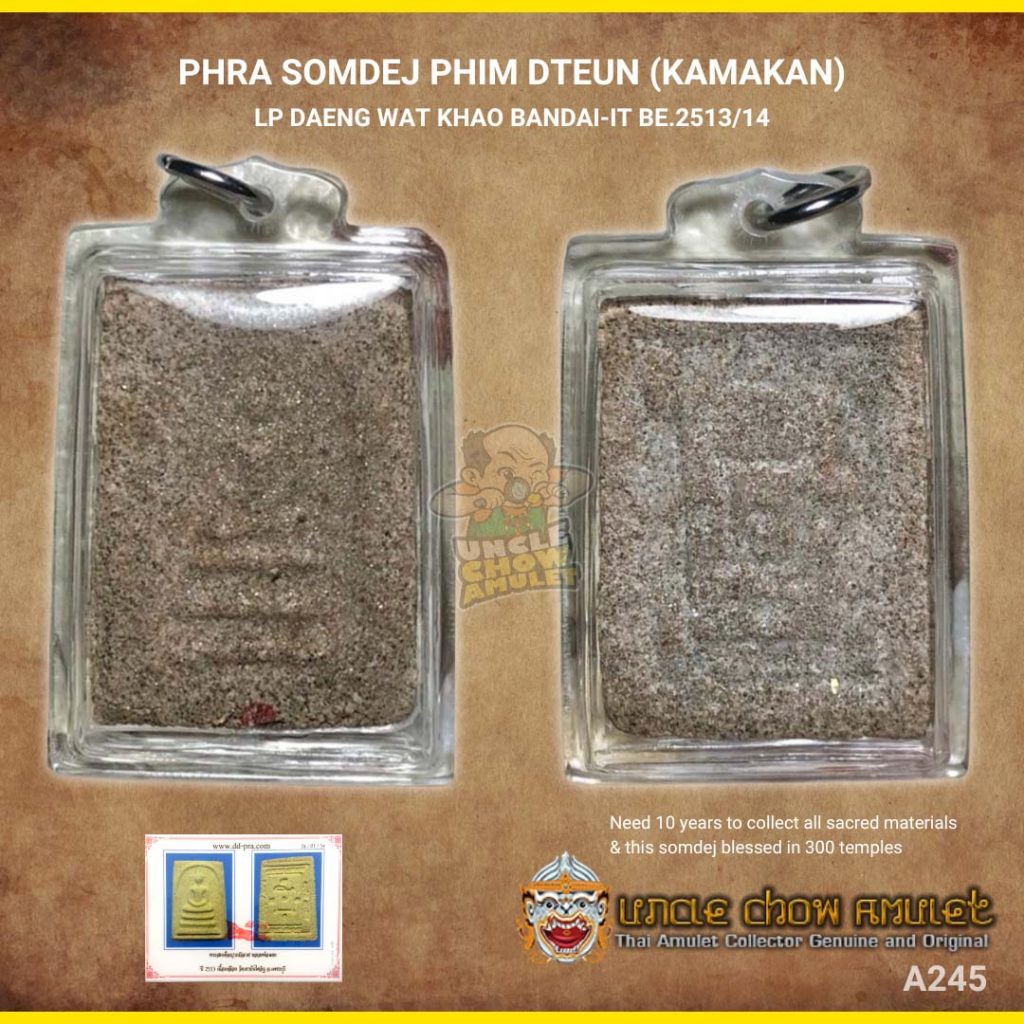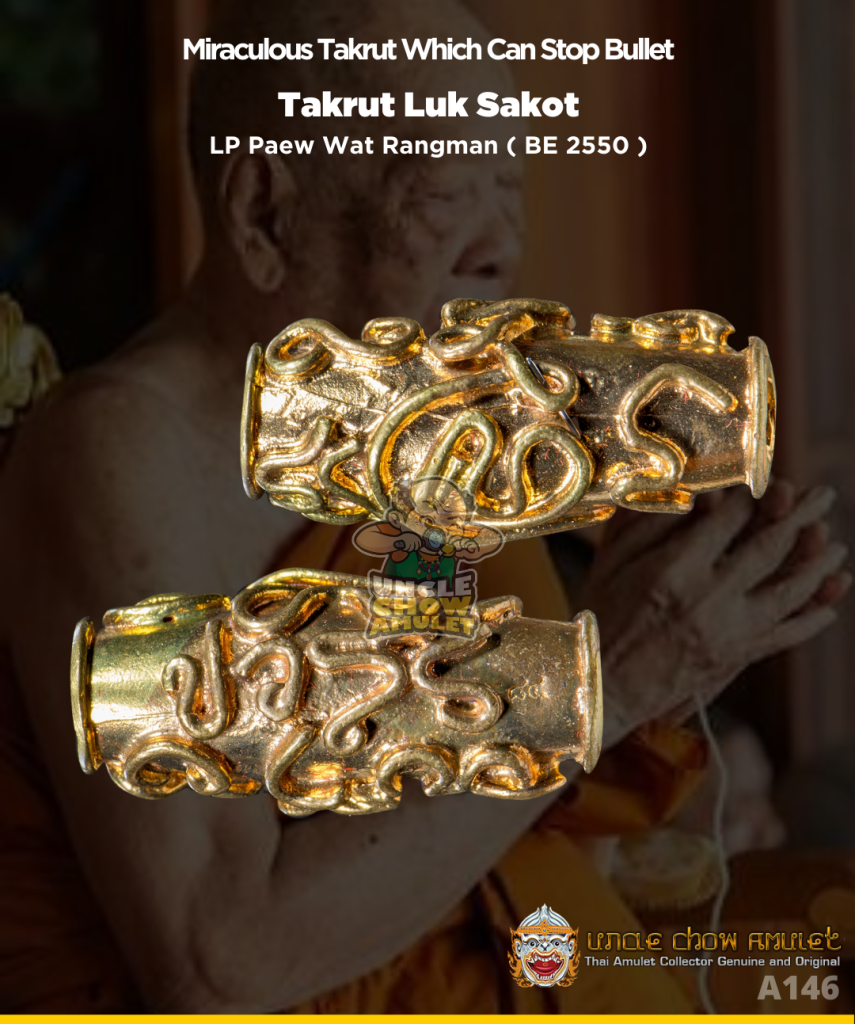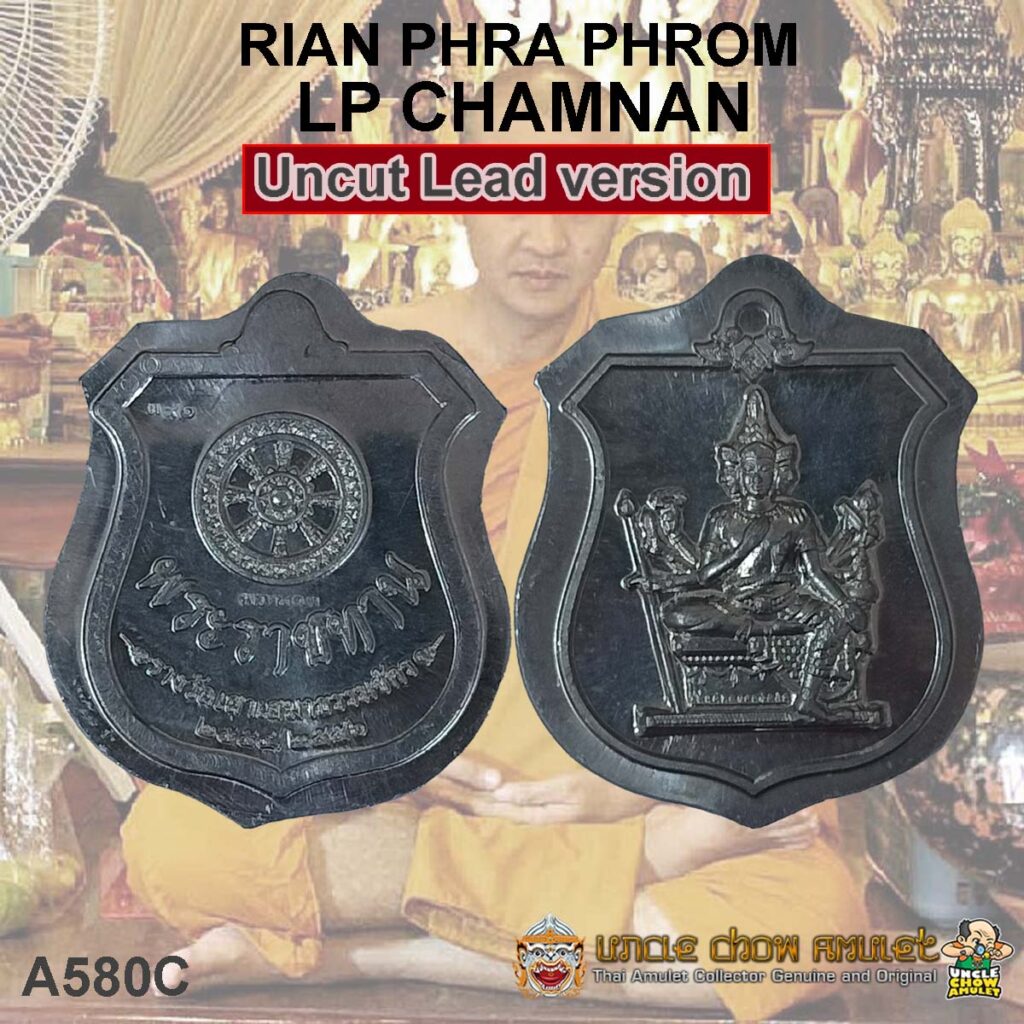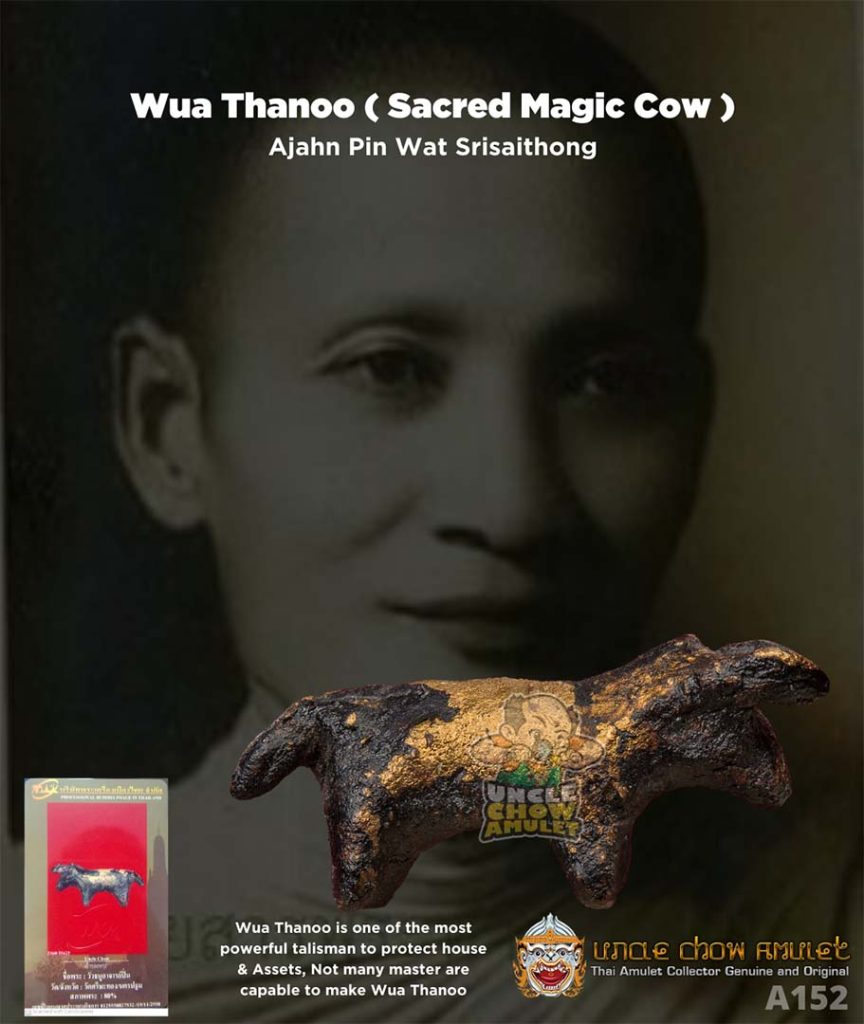Welcome to our store Uncle Chow Amulet Gallery
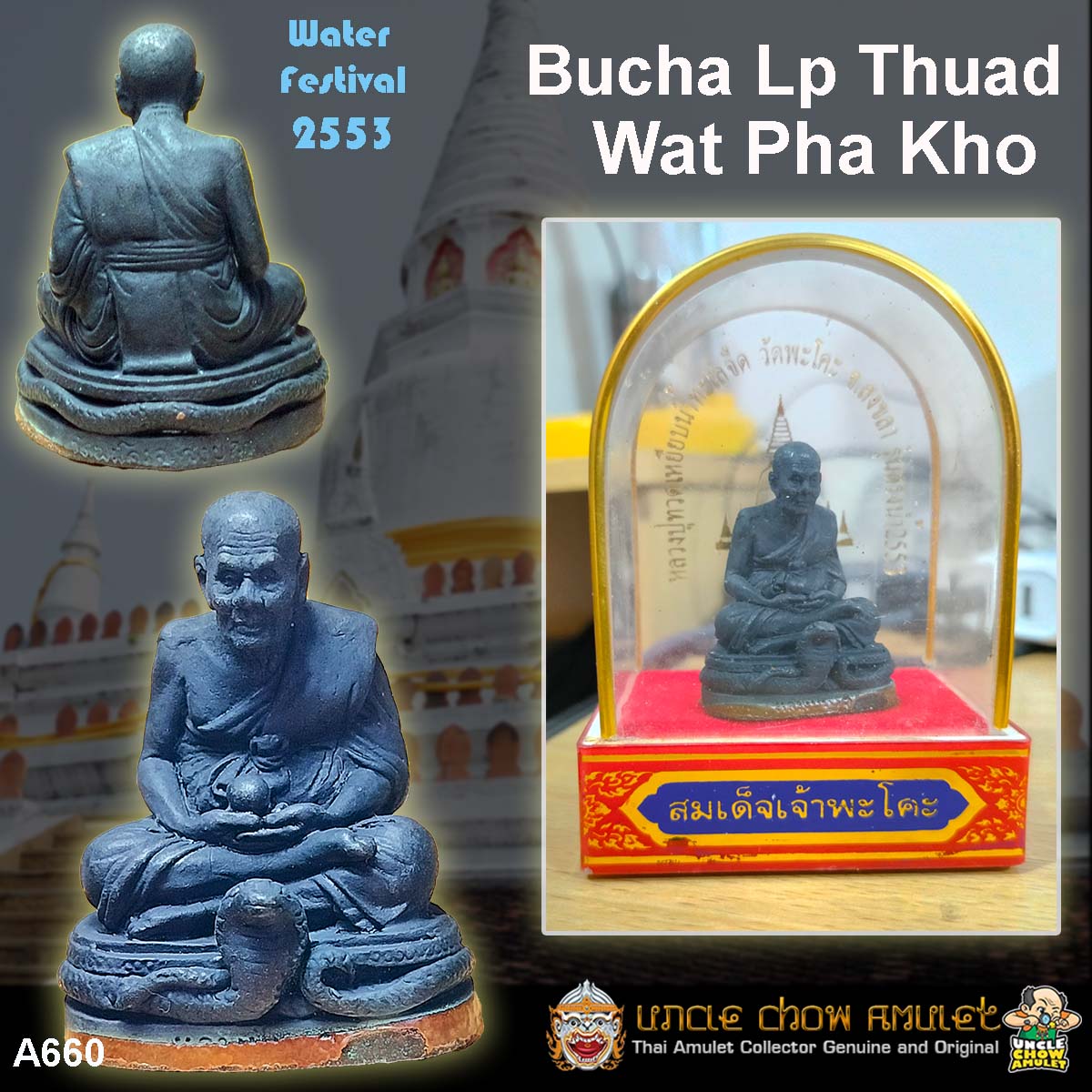
Uncle Chow Amulet
LP Thuad Wat Pha Ko BE 2553
code: A660 Mini Bucha LP Thuad Wat Pha Ko Year: BE 2553 (2010) Dimensions: 9.5 cm x 7 cm x 4.5 cm. Wat Ratchapraditsthan, also…
Category : Bucha, uncategorized
Share :
Product Details
code: A660
Mini Bucha LP Thuad Wat Pha Ko
Year: BE 2553 (2010)
Dimensions: 9.5 cm x 7 cm x 4.5 cm.
Wat Ratchapraditsthan, also known as Wat Pha Ko, is the oldest temple in Songkhla Province. It is located in Chumphol Subdistrict, Sathing Phra District, and is believed to have been built around the year 500 B.E. by Phra Chinnasen, as the consecration of the ordination hall (Visungkhama Sima) took place in 840 B.E. However, this might just be a story passed down by many people.
Another piece of evidence, found in the chronicles of Phatthalung, suggests that the temple was built in 2057 B.E. during the reign of King Ramathibodi II. It was constructed on top of Phatthasing Hill, which was the administrative center of the city in the Songkhla Lake basin. The name of the temple comes from Somdej Pha Ko, or Luang Pho Thuat, a highly revered monk known for his miracle of turning seawater into fresh water. Although the temple was later renamed Wat Ratchapraditsthan, locals still commonly refer to it as Wat Pha Ko.
Wat Ratchapraditsthan holds significant historical importance as it was once the location for the city of Phatthalung’s oath of allegiance ceremony (Phra Pipat Sattaya). It is also the site where a sacred relic is enshrined. The temple was officially registered as a historical site on November 29, 1985.
As for the legend about Luang Por Thuad stepping on the seawater, or Somdet Pha Ko, he is a revered and sacred figure deeply rooted in the culture and beliefs of the people of Songkhla. He has long been a spiritual anchor for the locals. His image is enshrined at Wat Ratchapradittharam, commonly known as Wat Pha Ko, which has a rich and venerable history.
The reason why he became known as “Luang Pu Thuat Stepping on Salt Water and Turning it Fresh” originates from a miraculous event. In ancient times, pirates anchored their ships along the coast, causing the villagers great fear and panic. The Chinese pirates, seeing Somdet Pha Ko, wanted to test his powers, so they took him aboard their ship. Shortly after leaving the shore, something strange happened—their ship came to a complete standstill, unable to move. The pirates tried everything they could to resolve the situation but to no avail. Days passed, and they ran out of fresh drinking water.
Seeing their plight, Luang Pu Thuat took pity on them. He extended his foot and stepped into the sea, where the water shimmered and sparkled. He then told the pirates to scoop up the water and drink it. Although skeptical, the pirates had no other choice and followed his instruction. Miraculously, the seawater had turned fresh. The pirates, astonished by the miracle, immediately begged for his forgiveness and returned him to the shore. This event earned him the name “Luang Pu Thuat Stepping on Salt Water and Turning it Fresh,” a title that has been passed down to this day.
Wat Pha Ko is located at the base of Phako Hill in Chumphon Subdistrict, Sathing Phra District, Songkhla Province. It is surrounded by the Chumphon and Dee Luang communities. Previously, the temple was only known locally, but the two communities worked together to develop the area and the temple as a community-based tourism route. This has provided visitors with the opportunity to pay their respects to Luang Pu Thuat and also helped distribute income to the local community.
